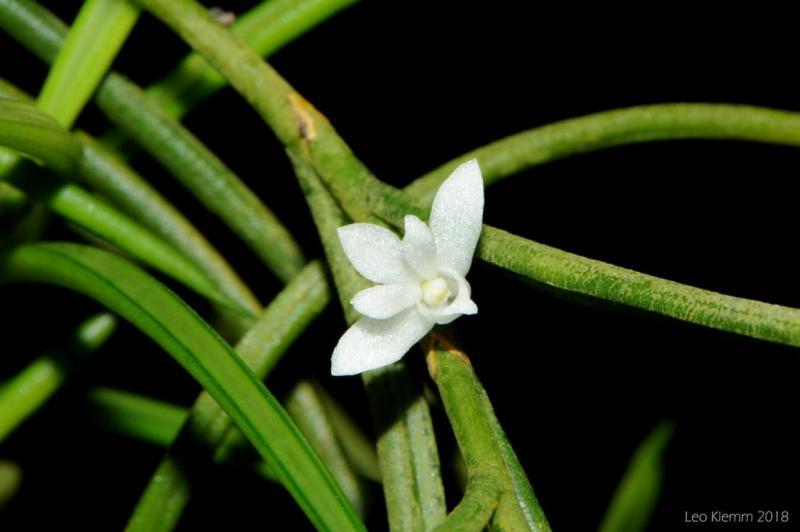Angraecum subulatum
Also known as: The Terete Angraecum in the subfamily: Epidendroideae
Native to: Cameroon Congo Ghana Liberia Nigeria
General Information
The Terete Angraecum is a medium to large sized intermediate to hot growing epiphytic orchid belonging to the sub family Epidendroideae native to Cameroon, Congo, Ghana, Liberia, and Nigeria. The name refers to the plant's leaf shape.
Plant Description
Grows to 60cm. Each new growth has numerous terete shaped leaves that grow to 0.3-13cm long. Pseudobulbs grow to 30-60cm
Substrate(s)
- Coarse
- Bark
Care Notes
These orchids like to be kept on the dry side, but may need to be watered daily during warm weather, and prefer a well draining mix or also do well mounted, provided they can be watered regularly.
These are quite a forgiving orchid, there are no special requirements to get this orchid to flower, just good care and consistent conditions. Larger plants may be more fussy and can react poorly to change; a poorly timed repotting, a pest infection or an unusually hot day can set them back for a couple of years. However, even plants that have been treated poorly can thrive, and if they are set back they often recover much stronger then they would otherwise be.
Climate
These orchids thrive in hot, steamy locations, living in low altitude jungle areas where they often receive heavy sporadic rainfall, warm humid winds, and sunlight filtered year round by the surrounding growth.
They can survive, but will often struggle if the humid, warm conditions are not met - roots will die back and leaves will thin out, spikes and buds can be aborted if conditions change too frequently during flowering. They can tolerate cooler or drier conditions temporarily, but extended exposure will seriously affect them.
They will grow best in the tropics, especially coastal areas where they receive ocean breezes, but can do well in a greenhouse, supplied that the humidity is kept high, temperature is not allowed to skyrocket and extra shade is provided during hot weather.
Grows at low elevations. Rainfall ranges from 10mm to 188mm per day, heaviest in June and lightest in January. Humidity ranges from 71% to 88%, highest in July and lowest in February. Temperature ranges from 19C to 33C, highest in February (22C to 33C) and lowest in August (19C to 26C).
Watering
Keep moisture levels up during hot weather as the plant is prone to dehydration
Fertiliser
Apply liquid based fertiliser per recommended directions. They can benefit from a high phosphate fertiliser leading up to flowering season, followed by a high nitrogen fertiliser when new growth appears, and a balanced fertiliser in other times. These orchids can also tolerate slow release fertiliser applied 1-2 pellets per cup (250ml) of media.
Use balanced fertiliser during Spring and Summer. Apply fertiliser regularly at half strength year round. Use a high Nitrogen fertiliser during Spring and Summer. Use a high Phosphorous fertiliser during Summer.Potting
Due to the growth nature of these plants they are best mounted onto cork, tree fern slabs, or even trees if the climate suits. Water regularly especially in hot weather.
This plant does very well in baskets or suspended pots This plant does well mounted to Tree trunks or Fern slabs. Repotting is best done annually.











